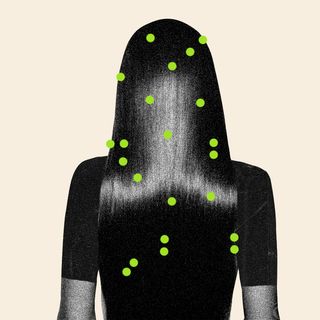Every year, nearly 800,000 people die by suicide globally — bringing its toll to roughly one death every 40 seconds. In the wake of their loved ones’ untimely deaths, people are often left wondering whether there’s anything they could’ve done to stop them — perhaps, by guiding them to seek help from professionals before it was too late. However, the mental anguish one might be going through can be difficult for others to spot — preventing them from even recognizing the looming risk.
A new study attempts to address the invisibility of the crisis, by showing how an oral bacteria can potentially serve as an indicator of a person struggling with suicidal thoughts — helping screen for suicide risks and paving the path for preventive interventions.
Published in Scientific Reports, the study is based on the analysis of saliva samples from around 500 undergraduate students. Upon testing the samples, the researchers observed that participants who had experienced suicidal thoughts recently had lower levels of Alloprevotella rava — a bacterium known to promote brain health.
“These results are exciting because they tell us which bacteria we need to look at more closely. Our question now is, what are these bacteria doing biologically that affects mental health?” noted the study’s first author Angelica Ahrens from the microbiology and cell science department at IFAS, University of Florida. Ahrens’ statement hints at the possibility of not only detecting suicidal thoughts while there’s still time, but also targeting the bacteria itself to, perhaps, boost one’s mental health.
“Eventually, we hope this line of research could help predict suicidal ideation based on a person’s microbiome and could inform pro- or prebiotic treatments for those at risk,” Ahrens added.
Related on The Swaddle:
How Kapil Dev Dismissing Mental Illnesses as Fads Actively Harms People
The value of the study — especially given its focus on the youth — is immense. Suicide is the fourth leading cause of death among 15 to 29-year-olds — with 77% of these occurring in low- and middle-income countries. Not only that, but there has also been a 27% rise in suicides among Indian students between 2016 to 2021 — with more than 13,000 students dying by suicide in 2020 alone. To put it into perspective, research suggests that one student dies by suicide every hour in India.
However, depression can impact people’s personal hygiene; many depressed individuals report feeling too depleted to take showers, do laundry, wash their hands, and brush their teeth. Given that suicidal ideation and depression tend to co-occur rather often, the question that comes up is whether poor dental hygiene may have a role to play in lowering the levels of A. rava. The fact that students dealing with suicidal thoughts also had higher levels of bacteria associated with periodontal disease and other inflammatory health conditions, lends further credence to this theory.
The concern doesn’t entirely invalidate the research, though — in the absence of other tangible techniques to determine suicidal thoughts, low levels of A. rava can still serve as an indirect indicator, urging intervention. Moreover, the fact that A. rava is believed to contribute to more robust brain health does suggest that there might just be more to its relevance in suicide research than just a matter of poor dental hygiene.
Recently, scientists figured out a way to diagnose PTSD, too, by testing saliva samples — suggesting how saliva testing might present a new frontier for the diagnosis of invisible health conditions.
The non-invasive nature of saliva testing also lends it an advantage. Moreover, the fact that it’s possible for people to simply mail their samples to labs using a collection kit developed by the researchers, addresses the lack of energy and motivation depressed individuals often experience. Walking up to the lab for a test might seem like a bigger task; collecting a sample in the comfort of one’s home and getting it picked up isn’t as daunting — that, perhaps, will enable a larger number of people to seek help if the method succeeds in becoming a part of the diagnostics market in future.




